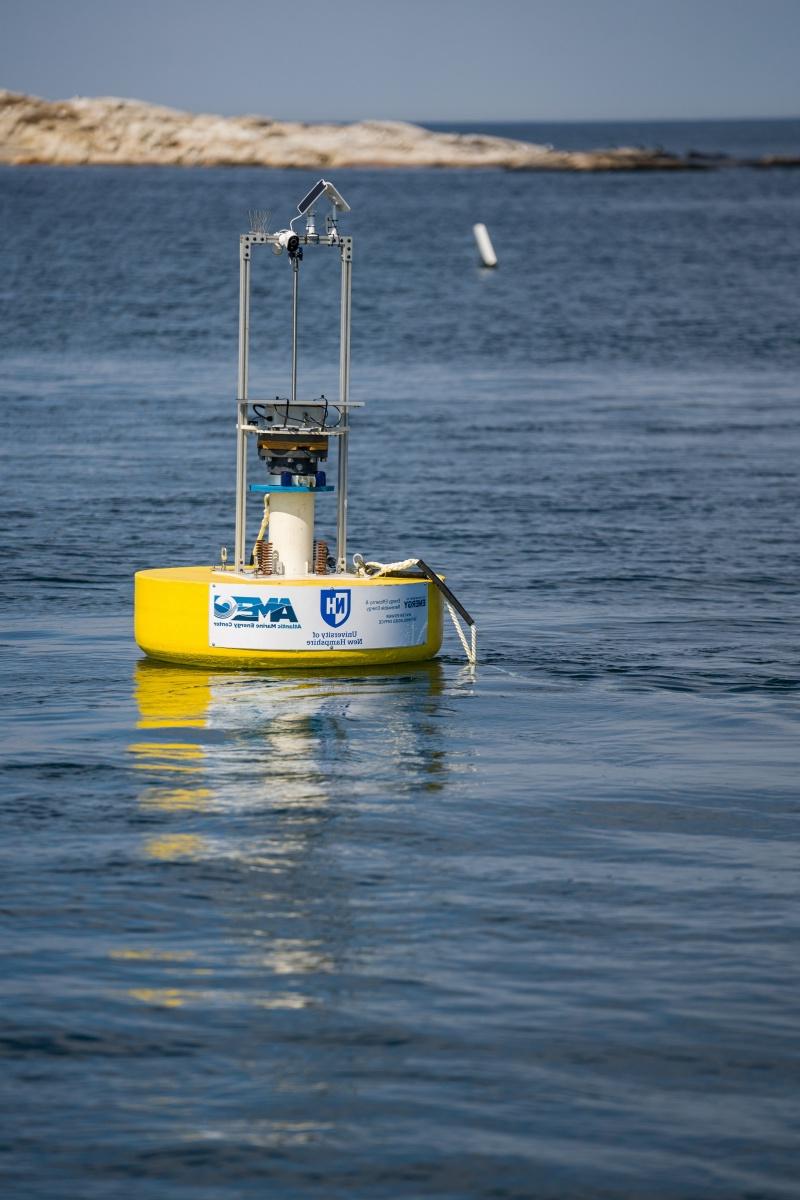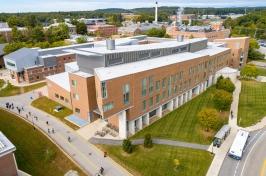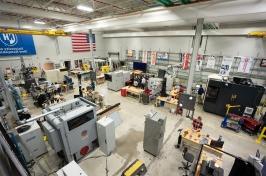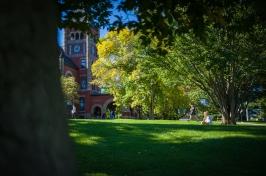
Martin Wosnik, shown here at the combined tow and wave tank in UNH's Chase Ocean Engineering Laboratory, directs the Atlantic Marine Energy Center. AMEC recently received a $12M award from the U.S. Department of Energy.
Could the famously predictable tides provide reliable power to coastal communities? What if the same waves that induce queasiness made aquaculture more productive?
The UNH-led Atlantic Marine Energy Center (AMEC) is developing the technology and skills that will unlock the power of the sea as a renewable source of energy. A new $12 million award from the U.S. Department of Energy (DOE) will advance these efforts by funding research, facilities and workforce development for the marine energy industry.
“There’s a lot of energy in the ocean — it’s abundant and renewable.”
“There’s a lot of energy in the ocean — it’s abundant and renewable,” says AMEC director Martin Wosnik, professor of mechanical and ocean engineering at UNH. “We think we can harness some of that energy in a reasonably benign way without impacting the ocean too much.” The DOE estimates that marine energy resources in the U.S. — from waves, tides, ocean and river currents — is equivalent to nearly 60% of all U.S. power generation.

UNH’s wave-powered water pump deployed off Appledore Island for an ocean test.
The five-year DOE investment will build upon existing AMEC research to fund projects at UNH as well as at AMEC consortium institutions Stony Brook University, Lehigh University and the Coastal Studies Institute.
A series of marine energy summer short courses taught at all four institutions aim to develop a workforce for this growing industry with “boot camps” for senior undergraduates and more in-depth, advanced courses for graduate students.
“Marine energy development faces a growing need for a highly skilled workforce with an interdisciplinary yet specialized skillset,” says Wosnik.
In addition, with the DOE award — funded largely through the Bipartisan Infrastructure Law — UNH will make improvements to its marine energy facilities, which include a combined wave and tow tank and deep engineering tank on campus and the UNH Tidal Energy Test Site on the Piscataqua River beneath the Memorial Bridge between Portsmouth and Kittery, Maine. Use of these assets extends beyond UNH: Researchers and technicians from industry and DOE National Labs travel to campus to utilize UNH’s unique marine energy research infrastructure.
UNH will also launch five research projects, among a total of 12 new projects across AMEC:
-
Refining models that will test whether assumptions about tidal energy are transferable to other sites (Tom Lippmann, professor and director of the UNH Center of Ocean Engineering, and Wosnik)
-
Modeling and testing wave energy converters for “blue economy” applications such as aquaculture (Arezoo Hasankhani, assistant professor of electrical and computer engineering, Wosnik and David Fredriksson, professor of ocean engineering and director of the UNH Center for Sustainable Seafood Systems)
-
Improving the performance of UNH’s wave-powered water pump for promoting growth rates in macroalgae (kelp) aquaculture (Wosnik, Fredriksson)
-
Improving the design of mooring systems for marine energy and developing new guidelines for marine energy anchor system design (Julie Paprocki, assistant professor of ocean engineering, and Majid Ghayoomi, professor of civil and environmental engineering)
-
Assessing marine energy system sustainability, economic and environmental benefits to microgrids on island communities (Weiwei Mo, associate professor of civil and environmental engineering, Hasankhani and Wosnik)
In addition to the faculty researchers, six UNH Ph.D. students will be involved in these projects.
“Marine energy has unique attributes that make it an attractive energy source,” says Wosnik. “We are grateful for the Department of Energy’s continued investment in our expertise at UNH and AMEC to help develop it.”
-
Written By:
Beth Potier | UNH Marketing | beth.potier@rajcmmementos.com | 2-1566



















































